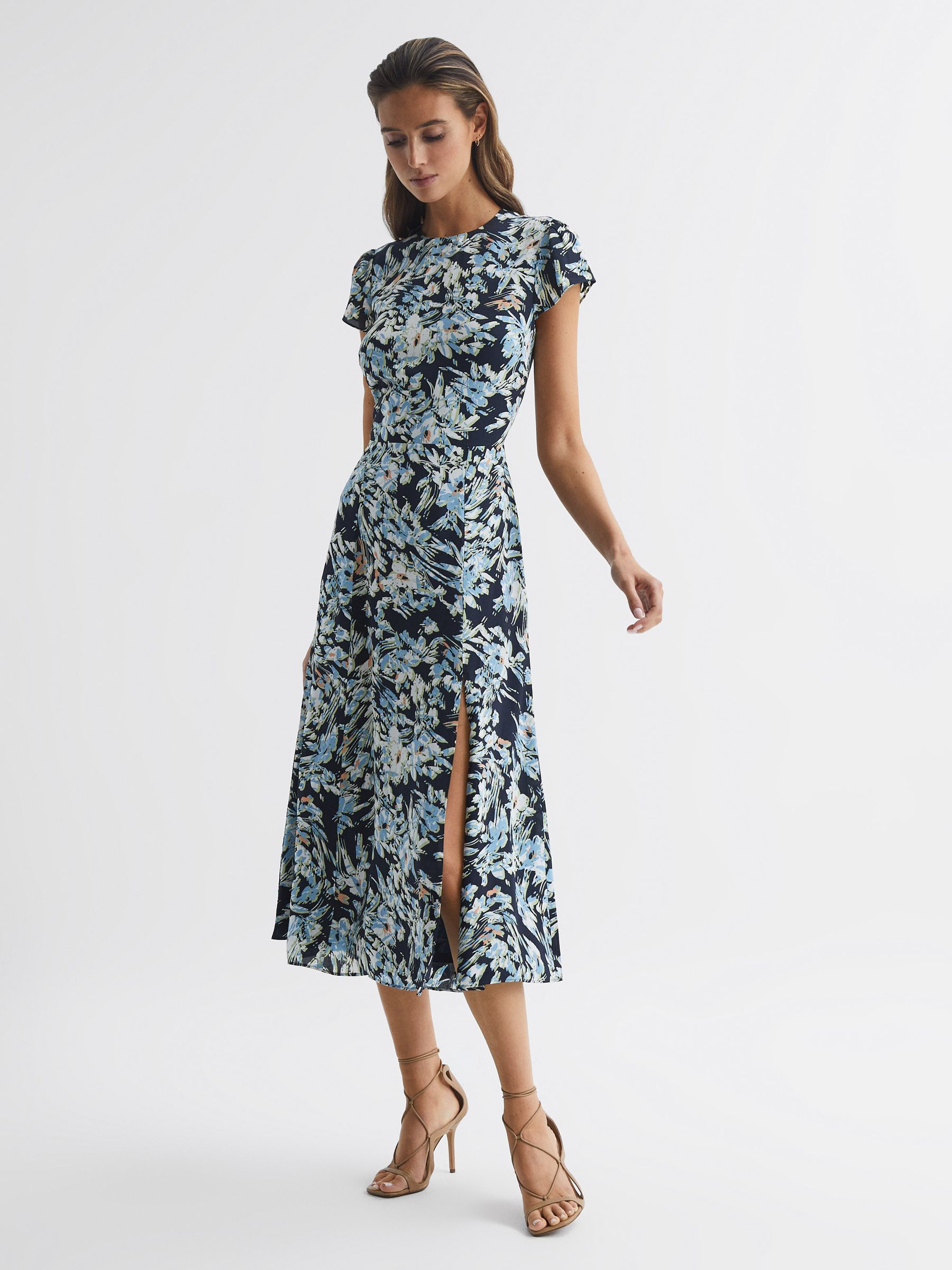Reiss Dress For Sale – The environmental benefits of buying second-hand goods go beyond just reducing the need for new production. Social media platforms, for example, offer users a chance to buy into their own identity, to curate a version of themselves that is more appealing, more desirable, more marketable. When a business is put up for sale, it is typically the result of a variety of reasons, each unique to the situation at hand. This is particularly evident in industries such as furniture, clothing, and electronics. There’s a certain art to selling something. By purchasing second-hand goods, consumers help keep products circulating in the economy, giving them new life and purpose. Additionally, second-hand furniture allows buyers to find unique items that may not be available in traditional furniture stores. The practice of buying and selling second-hand items has been around for centuries, but in recent years, it has seen a resurgence. The culture of buying second-hand goods is rapidly shifting in the modern world, particularly among younger generations. This sense of connection can also extend to the broader culture of quality goods, where consumers and creators share a commitment to excellence and a desire to preserve the craft and tradition behind these products. For many, purchasing second-hand goods is not only a practical and affordable choice but also an environmentally conscious one. The process of selling it can be seen as a form of letting go, a recognition that the future may look different from the past, but that doesn’t diminish its importance or value. They walk into a space that holds the potential for their own memories to be created, for their own life to unfold. The resale of pre-owned clothing has become a booming industry in recent years, with second-hand stores and online marketplaces thriving as more consumers opt for affordable, sustainable alternatives to fast fashion. Most new items, particularly electronics, are designed with built-in obsolescence. Unlike starting a business from scratch, which requires time to build a reputation and establish market credibility, buying an existing business means stepping into an environment where some of the groundwork has already been done. Both buyers and sellers should approach transactions with honesty and transparency to ensure a smooth exchange. Sellers can list items with detailed descriptions and high-quality photos, giving potential buyers a clear understanding of what they are purchasing. In this sense, purchasing pre-owned items can be seen as a form of social responsibility, as it helps create a positive impact that extends beyond the individual buyer. Yet, despite this shift, the appeal of quality craftsmanship has not waned.

Reiss Dress Taruca Sculptured Tailored in Red Lyst
Designer women appareltime to shop specialsshop & save on deals

Reiss Synthetic Ostia One Shoulder Cocktail Dress in Emerald (Green
Designer women appareltime to shop specialsshop & save on deals

Reiss Haisley Tailored Dress REISS USA
Designer women appareltime to shop specialsshop & save on deals

Reiss Marling Wrap Front Midi Dress in Blue Lyst
Designer women appareltime to shop specialsshop & save on deals

Reiss Navy/Cream Priya Pleated Belted Midi Dress
Designer women appareltime to shop specialsshop & save on deals

Romi Navy Lace Detailed Midi Dress REISS
Designer women appareltime to shop specialsshop & save on deals

Reiss Livia Printed Cut Out Back Midi Dress REISS
Designer women appareltime to shop specialsshop & save on deals

Reiss Livvy Open Back Midi Dress REISS Germany
Designer women appareltime to shop specialsshop & save on deals

REISS SERENELLA LACE DETAIL DRESS Lace detailed dress, Dresses
Designer women appareltime to shop specialsshop & save on deals

Reiss Rita Halterneck Satin Midi Dress in Pink Lyst
Designer women appareltime to shop specialsshop & save on deals
Success after the acquisition depends on a variety of factors, such as effective leadership, market conditions, and the buyer’s ability to make improvements and capitalize on growth opportunities. Second-hand goods for sale are no longer seen as inferior or out-of-date, but rather as a conscious, stylish, and eco-friendly choice. When people choose quality goods, they are choosing longevity over convenience, enduring craftsmanship over temporary trends, and often, a timeless aesthetic over what is in vogue today. The rise of online platforms dedicated to the sale of second-hand goods has also played a significant role in the growing popularity of pre-owned items. Websites like eBay, Craigslist, Facebook Marketplace, and Poshmark have made it easier than ever for individuals to sell their unwanted items and for buyers to find exactly what they are looking for. In some cases, a business may look profitable but may be hiding significant underlying issues, such as declining sales, ineffective marketing strategies, or employee dissatisfaction. The idea of “everything for sale” challenges our understanding of what is sacred, what is essential, and what is truly priceless. For the seller, the goal is often to maximize the value of the business, while for the buyer, the focus is on ensuring that the investment is sound and that the business can continue to thrive under new ownership. The most obvious benefit is the cost savings. This practice is an essential aspect of sustainability, as it helps conserve resources and reduces the amount of waste sent to landfills. Even in a marketplace where everything is commodified, there is still room for those moments and experiences that transcend value. Additionally, there is the challenge of integrating the business into their existing operations and ensuring that it continues to thrive under new ownership. The ease and convenience of online sales have created a global marketplace where individuals can connect with buyers and sellers across the world. In fact, there’s been a resurgence of interest in artisanal, locally-made products, especially in industries like fashion, home decor, and food. Thrift stores and consignment shops often work with charitable organizations or local non-profits, using the proceeds from sales to support various causes. Whether it’s the smooth finish of a well-polished wooden table or the satisfying feel of a perfectly balanced knife in your hand, quality goods evoke a sense of pride in their ownership. From online platforms to local thrift stores, second-hand goods offer an opportunity for consumers to access unique products, save money, and reduce their environmental footprint. But in reality, even the most profound relationships can be commodified in some way. For the buyer, purchasing a home is a dream realized, a step toward security and stability. Similarly, in relationships, individuals may feel as though they are selling themselves, presenting their best qualities and hoping for the best outcome.
A car might be sold because it no longer serves the needs of its owner, or perhaps the owner is simply ready for a change. Whether it's old furniture that no longer fits with their style, clothing that no longer fits, or electronics they no longer use, selling second-hand items allows individuals to recoup some of the money they spent on these goods. This subjective nature of value is what makes the “for sale” market so dynamic. Every click, every like, every follow, is part of an ongoing transaction. In conclusion, the sale of a business is a complex process that involves numerous steps, from identifying the right buyer or seller to completing due diligence and negotiating the terms of the transaction. Thrift stores often carry a wide variety of goods, from clothing and accessories to furniture, books, and electronics, and each item comes with its own story. Negotiation is often the most delicate part of the sale process. For the buyer, a car offers freedom, mobility, and a chance to create their own story on the road. It’s about change, opportunity, and the negotiation of value. Entrepreneurs can launch businesses from their homes, and freelancers can offer their skills to clients across the world. For sellers, online platforms provide a global marketplace, allowing them to reach a wider audience than they would through traditional brick-and-mortar stores. When it’s put up for sale, it can bring with it a sense of loss, as if a piece of the seller’s life is being taken away. Whether it’s the smooth finish of a well-polished wooden table or the satisfying feel of a perfectly balanced knife in your hand, quality goods evoke a sense of pride in their ownership. The “for sale” sign becomes a marker in time, a decision that has been made, signaling that it’s time to move on. The appeal of finding a hidden gem, something that has been cherished by someone else and is now available for a new owner, is a part of the allure of second-hand goods. But the financial aspect is only one part of the equation. With just a few clicks, consumers can browse through thousands of listings for second-hand items from all over the world. On the other, there’s the challenge of assessing the true value of a business, navigating the complex negotiations, and ensuring that the business is a sound investment in terms of both its financial health and its long-term viability. This has made it easier for people to find items that might have otherwise been out of reach, whether it’s a rare collectible, an antique, or a product from another country. People often feel like they are for sale, too, in various ways.